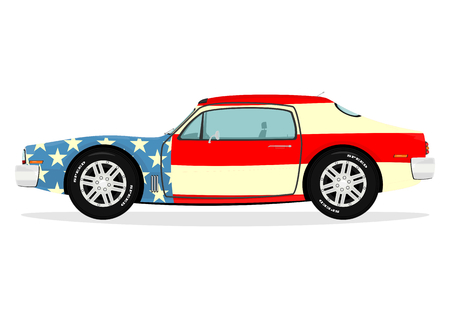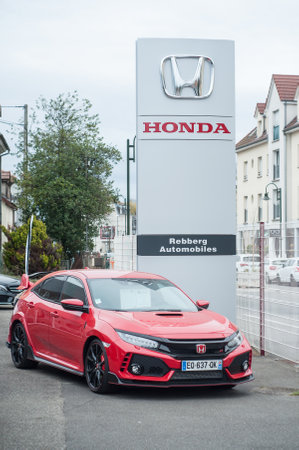Introduction: Street Racing and Pop Culture
Street racing has long been a part of American urban life, fueled by a passion for speed, cars, and the thrill of rebellion. From the earliest days of hot rods in post-war California to the bustling underground car scenes in cities like Los Angeles and Miami, street racing has always walked the line between outlaw culture and youthful expression. Over the decades, this high-octane subculture mostly existed on the fringes of society, only truly known to those who participated in it or lived near its nocturnal circuits. However, with the rise of Hollywoods fascination with fast cars and adrenaline-pumping action, movies began to play a pivotal role in both reflecting and reshaping the street racing scene. Films like “The Fast and the Furious” didnt just capture the excitement and danger of illegal street races—they introduced it to mainstream America, transforming what was once an underground movement into a widely recognized aspect of pop culture.
Hollywood’s Influence: The Rise of The Fast and the Furious
When The Fast and the Furious hit theaters in 2001, it became an instant cultural phenomenon. Hollywood’s depiction of underground street racing was unlike anything American audiences had seen before. With its high-octane action, diverse cast, and focus on the tight-knit community surrounding cars, the film set a new benchmark for car culture movies. The franchise did more than just entertain; it shaped perceptions, trends, and even the language associated with street racing. Suddenly, terms like “NOS,” “drifting,” and “tuner culture” were part of everyday conversation, and car enthusiasts across the country found themselves inspired to modify their own vehicles.
| Aspect | Before The Fast and the Furious | After The Fast and the Furious |
|---|---|---|
| Mainstream Popularity | Limited to small communities | Nationally recognized trend |
| Car Customization | Mostly functional modifications | Focus on aesthetics and performance upgrades |
| Street Racing Lingo | Niche jargon | Became part of pop culture vocabulary |
The film’s massive success can be attributed to its ability to tap into America’s fascination with speed, rebellion, and camaraderie. By placing fast cars at the center of its narrative and showcasing spectacular stunts against a backdrop of vibrant Los Angeles nightlife, The Fast and the Furious brought underground car culture to the forefront. Sequels built on this foundation, each time raising the stakes with more elaborate races and international settings. As a result, Hollywood didn’t just reflect street racing culture—it propelled it forward, setting trends that would influence everything from fashion to music to automotive design in the years that followed.

3. Representation of Street Racing Lifestyle
When “The Fast and the Furious” hit theaters, it didnt just bring high-octane action to the big screen—it vividly depicted a subculture that many Americans had never seen before. The franchise showcased underground street racing scenes filled with souped-up imports, neon lights, and tricked-out rides, capturing the imagination of car enthusiasts across the country. The films paid close attention to car modifications—turbochargers, nitrous oxide kits, custom paint jobs, and lowered suspensions—which quickly became aspirational trends for real-life fans eager to emulate their on-screen heroes.
The movies also shaped the fashion associated with street racing. Characters sported a mix of urban streetwear: tank tops, baggy jeans, backward caps, and flashy accessories became synonymous with the look. This style, combined with the visual aesthetic of modified cars, helped define what it meant to be part of the scene in cities from Los Angeles to Miami.
Music was another crucial element. The soundtracks blended hip-hop, electronic beats, and Latin rhythms, perfectly matching the adrenaline-fueled races and diverse backgrounds of the characters. These tracks not only set the mood for each race but also influenced playlists at real-life car meets and parties across America.
By portraying street racing as more than just illegal competition—emphasizing brotherhood, respect, and individuality—the films inspired a new generation of car lovers. Many young Americans began organizing their own meets and modifying their vehicles in ways that mirrored what they saw on screen. “The Fast and the Furious” didn’t just represent street racing; it made it a mainstream phenomenon that shaped automotive culture nationwide.
4. Shifting Perceptions: Legitimizing Underground Culture
When “The Fast and the Furious” franchise exploded onto the American movie scene, it brought with it more than just adrenaline-pumping action—it fundamentally changed how street racing was viewed by the public. Before these films, underground racing was often seen as a reckless and dangerous pastime reserved for outcasts or criminals. However, the movies painted a different picture, portraying street racers as skilled drivers, loyal friends, and even unlikely heroes navigating a complex urban world. This shift in narrative made street racing feel less like a fringe activity and more like an exciting subculture with its own rules, values, and sense of community.
The glamorization of street racing in these movies played a major role in legitimizing the culture. Characters were depicted as passionate enthusiasts who cared about their cars, their friends, and their code of honor. The franchises use of diverse casts and relatable backstories also helped audiences see themselves reflected in the stories, further breaking down stereotypes associated with street racers. As a result, what was once considered deviant behavior gradually gained acceptance among mainstream audiences, especially younger generations influenced by the films style and swagger.
Key Ways Movies Shifted Perception
Aspect |
Before the Movies |
After the Movies |
|---|---|---|
Public Image |
Seen as dangerous, illegal activity | Viewed as stylish, skillful subculture |
Media Representation |
Mostly negative news coverage | Mainstream entertainment and pop culture references |
Social Acceptance |
Marginalized by society | Increasingly accepted among youth and car enthusiasts |
Community Values |
Perceived lack of morals or structure | Emphasis on loyalty, respect, and passion for cars |
This transformation wasnt without controversy—some critics argued that glamorizing illegal street racing could encourage risky behavior. However, its undeniable that “The Fast and the Furious” movies sparked conversations about car culture and personal freedom that resonated with many Americans. By bringing underground racing into the spotlight and framing it as both thrilling and relatable, these films helped shape not just how people see street racing, but how they understand American youth culture itself.
5. Safety, Law, and Regulation
As street racing exploded in popularity—thanks in part to the influence of “The Fast and the Furious” movies—law enforcement agencies across the United States faced new challenges. The glamorization of illegal racing led to a visible spike in dangerous driving, which quickly caught the attention of police departments and lawmakers. Cities like Los Angeles, Miami, and Houston began dedicating specialized task forces to crack down on street racing hotspots, employing undercover operations and surveillance technology to curb illicit activities. Public safety campaigns also ramped up, with local governments launching awareness programs highlighting the deadly consequences of street racing. Slogans such as “Race on Tracks, Not Streets” became commonplace at schools and community centers. Insurance companies joined the conversation too, increasing premiums for high-performance vehicles and drivers with racing-related citations. Meanwhile, lawmakers introduced stricter regulations: harsher penalties for offenders, vehicle impoundment laws, and even legislation targeting online forums where races were organized. These combined efforts shifted street racing further underground but also encouraged some enthusiasts to seek legal alternatives, like sanctioned drag strips. Ultimately, the heightened visibility from Hollywood brought about lasting changes in how American society addresses street racing—from enforcement tactics to community education.
6. Fan Communities and Lasting Impact
The influence of movies like “The Fast and the Furious” goes far beyond the big screen, leaving a profound mark on American street racing culture by inspiring a vibrant network of fan communities. As the franchise gained popularity, car meets and conventions began popping up across the United States, bringing together enthusiasts who shared a passion for modified cars, high-octane thrills, and the camaraderie depicted in the films. These gatherings often feature show-stopping vehicles, custom builds, live demonstrations, and opportunities for fans to connect face-to-face—mirroring the sense of family and community celebrated in the movies.
With the rise of social media and online forums, these communities have only grown stronger. Platforms like Reddit, Instagram, and dedicated car enthusiast sites provide spaces for people to share stories, swap modification tips, showcase their rides, and organize local events. The digital world has broken down geographic barriers, allowing fans from coast to coast—and even around the globe—to bond over their shared love of street racing culture as portrayed in Hollywood.
The lasting impact of “The Fast and the Furious” franchise is evident not just in the cars themselves but in how it fostered a sense of belonging among fans. Annual conventions such as SEMA (Specialty Equipment Market Association) and Cars & Coffee gatherings reflect this enduring enthusiasm, blending elements of pop culture with real-world automotive innovation. Even years after its debut, the franchise’s influence persists in fashion trends, slang, music choices at meets, and a general appreciation for car culture among younger generations.
Ultimately, these movies helped transform what was once an underground scene into a celebrated part of mainstream American culture. The legacy lives on through every fan who customizes their ride or joins a local meet—proving that the spirit of “The Fast and the Furious” continues to rev up excitement both on screen and off.


